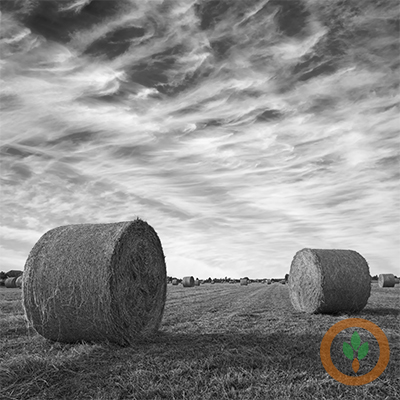News
Hay quality and availability another challenge facing cattle producers

A southwest Missouri cattle producer is reminding farmers to test their hay this fall. Kristina Callison with Fire Sweep Ranch says the ongoing drought has significantly decreased hay quality.
She says they recently purchased 30 bales from a local seller. “Our test came back and it was positive for nitrates,” she says. “I contacted the lab and paid another $10 to have a quantified test ran on the hay. The nitrogen level is higher than 2.09%, which cannot even be diluted safely and fed to anything. It’s basically poisonous.”
The Callison’s didn’t lose any cattle after feeding the high-nitrate hay, but she says they will have to monitor their herd for any potential abortions. When forages that are high in nitrate are fed to livestock it is converted to nitrite in the rumen. If a cow is pregnant and the nitrite levels are high enough, oxygen to the fetus decreases and early abortions can occur.
AUDIO: Kristina Callison, Missouri cattle producer
Eric Bailey, University of Missouri beef nutrition specialist says the drought has forced cattle producers to feed hay much earlier than normal. He tells Brownfield his biggest concern is the amount of hay purchased that isn’t being tested. “You know, it’s based on these subjective characteristics,” he says. “It’s this year’s crop. It was stored in a barn. It was out in the field, it’s a Fescue mix, it’s leafy. There’s just a lot of really subjective descriptions, but ultimately, we’re not feeding subjective descriptions the cattle were feeding nutrients.”
Bailey says producers have to make sure their cows are getting enough energy out of their hay in preparation for winter. “Any hay that’s below 55% total digestible nutrients (TDN), which is a measurement of energy that you get back from any basic analytical test that you would do in a lab is insufficient at meeting a beef cow’s nutrient requirements,” he says. “In particular, I get really concerned when we get to feeding some of our lower-end marginal hays in that TDN drops into the mid-to-high 40s.”
AUDIO: Eric Bailey, University of Missouri beef nutrition specialist
Callison says they feed hay to fall-calving cows and nutrition is a critical component to their operation. “The hay that we’ve purchased everything has been 5% protein, TDN like 48 maybe 50,” she says. “So it’s very low-quality hay that has to be supplemented.” Hay tests help producers develop cost-effective feeding programs to meet animal production and performance goals and typically run between $20 and $30

Add Comment